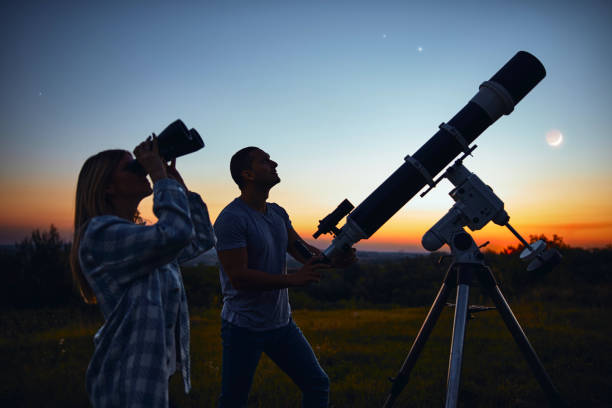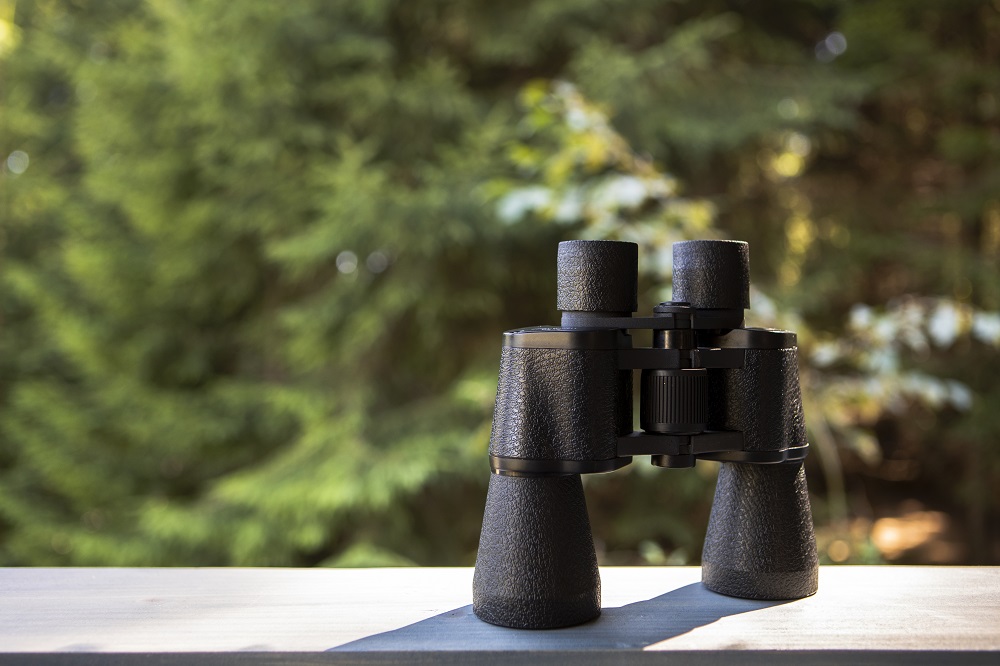Difference Between a Telescope and a Binocular
October 2023

Difference between Telescope and Binocular: Human beings have always had a fascination with nature and the universe. Celestial phenomena have intrigued us for ages, and in this continuous pursuit of knowledge, the choice of the right observational instrument is ours to make.
This blog focuses on one of the most important questions in the world today: the difference between telescope and binocular. It is crucial that you pick the right material, which perfectly influences the end results. If you’re a rookie hobbyist or an upcoming astronaut, these distinctions are important for your rewarding astronomical experience.
Historical Background
Before looking to the differences between telescopes and binoculars, we need to know about the histories of these two. Let’s examine the historical background and significance of the telescope and binoculars.
Telescope:
The telescope, a cornerstone in astronomy, was invented in the early 17th century. While Galileo Galilei is often credited with telescope development, the Dutch mathematician Hans Lippershey who first applied for a patent for the invention. Over the years, telescopes have undergone significant advancements. The evolution has been remarkable, from the rudimentary refracting telescopes of the past to today’s sophisticated reflecting and radio telescopes. These advancements have enabled groundbreaking discoveries from distant galaxies to black holes, fundamentally altering our understanding of the universe.
Binoculars:
Binoculars have a much lower elevation of origin than telescopes. They were first devised for military and navigation use and eventually gained popularity in the nineteenth century. Binoculars comprise two parallel and collinear telescopic tubes, permitting a tridimensional vision. They have been used in different areas, such as astronomy, bird-watching and spectator sports. First, such telescopes, as well as binoculars, are portable and easy to use, and that has made them a preferred option for observational devices. They all have strengths and weaknesses, making it paramount for anyone engaging in observations.
Key Differences in Design and Structure
Both the design and structure of telescopes and binoculars vary significantly, and these differences are crucial when considering their respective applications. Here are some key distinctions:
Single vs. Dual Eyepiece:
Traditional telescopes have only one eyepiece to enable more detailed observation of an area in the sky. This gives a high magnification factor but with a restricted field of view. However, binoculars use two eyepieces, creating a broader and more involved field of vision.
Optical Design:
Telescopes most commonly include lenses and mirrors to collect and focalise light. The binoculars usually employ individual lenses, which are simple and less powerful in magnification and light-gathering functions.
Size and Portability:
Some telescopes are quite heavy, even large ones, so they need a good ground for accurate readings. These are more compact binoculars that one can pick up and move anywhere at short notice for quick viewing.
Ease of Use:
Telescopes are also not very easy to use as most of them will need some initial set-up and calibration, which can be a little challenging for starters. The binoculars typically require little or no setup at all.
Versatility:
While telescopes are meant for astronomy, binoculars are used in many other activities, including bird watching, hiking and many sports activities.
Usage and Applications
The real differences between telescope and binocular stretch beyond mere construction; they also refer to practicability. Here’s a breakdown of how each instrument excels in its respective domain:
Telescope
Telescopes represent the tools of choice for rigorous astronomical observations. Astronomers cannot do without the use of these indispensable instruments in studying distant galaxies, nebulae and other celestial phenomena. Additionally, telescopes are important for studying planets and making specific observations in our solar system.
Binoculars
On the other hand, binoculars provide a unique type of versatility that is perfect for terrestrial activities like bird-watching, hiking, and sports watching. This is because they are usually portable, and thus, they are particularly suitable for these applications. In addition to these, binoculars are normally used during casual star watching as they have a wider field than telescopes.
Practical Scenarios
In relation to the use in practice, the decision between a telescope and binoculars is subject to individual requirements. A telescope remains the better option if your focus is on comprehensive astronomical research. However, binoculars are a better option as they provide a more adaptable solution for everyday needs.
Telescopes and binoculars have their own advantages and disadvantages. Thus, whatever your observational objectives are either for deep-space research or earthly activities, your choice must depend on that.
Choosing the Right Tool
Selecting an appropriate observational tool involves several considerations, including experience levels, observational goals, and financial constraints. Therefore, understanding the difference between telescope and binocular plays a role in this context.
Beginners and others can use binoculars on a shoestring budget. These are user-friendly and can be used for terrestrial and basic celestial observations. However, a telescope would be the right investment if you prefer deep space exploration and scientific research.
To Sum Up
Finally, we’ve discussed the differences between telescopes and binoculars in their design, uses, advantages, and disadvantages. However, telescopes provide excellent detailed celestial views, and their transportability and ease of set-up are usually not up to the mark. However, binoculars offer a compromise between convenience and versatility, although they cannot be used for observing deep space.
Therefore, it is crucial to notice these differences for a well-informed selection based on your particular observational needs. Whether your interest lies in astronomy or terrestrial exploration, a proper tool will significantly improve your view. Choose wisely, and the universe will be your endless canvas.
Ready to take your project management to the next level? Discover Pie Matrix, the all-in-one platform designed to streamline your workflow, enhance team collaboration and drive project success. Don’t miss out—elevate your project management game with Pie Matrix today!






